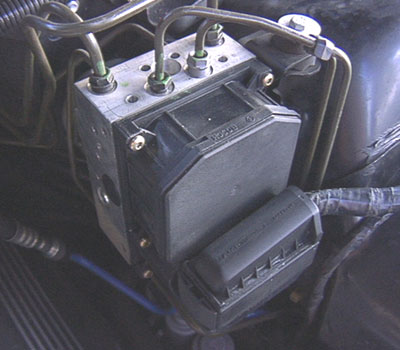 BOSCH DSC5.7 - System Overview
BOSCH DSC5.7 - System OverviewIt is as such a considerable leap forward from its predecessors using super fast information from advanced sensors such as the yaw rate sensor to instantly determine exactly what is happening to the vehicle at any point in time, what the driver is doing and is able to apply the appropriate corrective action under almost any circumstance to keep the vehicle within pre defined safety margins and so providing a unique and incredibly Dynamic stability control functionality that encompasses all of the previously individually seen components of Hill Descent, Traction control, anti lock, anti skid, and brake force distribution into one unit although different vehicle manufacturers seem to apply different terminology abbreviations for the feature.
It connects to other core vehicle system ECUís such as the Engine management and the Automatic gearbox over the very fast CAN bus which allows the co sharing of such near instantaneous information it is almost as if all the ECUís were one system. It also treats a number of other sensors which are also fitted to the CAN bus as its own such as the steering wheel angle sensor and Yaw rate sensor. This connectivity not only allows it to know instantaneously what is going on but also when required to instantly control gearing, engine power output, and driver information through the bus.
As a safety related ECU it is important to ensure that the system is always performing properly and that it can rely on the information provided to it as being accurate.
 BOSCH DSC5.7 - Known Fitments
BOSCH DSC5.7 - Known Fitments BOSCH DSC5.7 - Physical Details
BOSCH DSC5.7 - Physical Details
 SM045 - BOSCH DSC5.7 - Diagnostic Capabilities (Read Fault Codes)
SM045 - BOSCH DSC5.7 - Diagnostic Capabilities (Read Fault Codes)